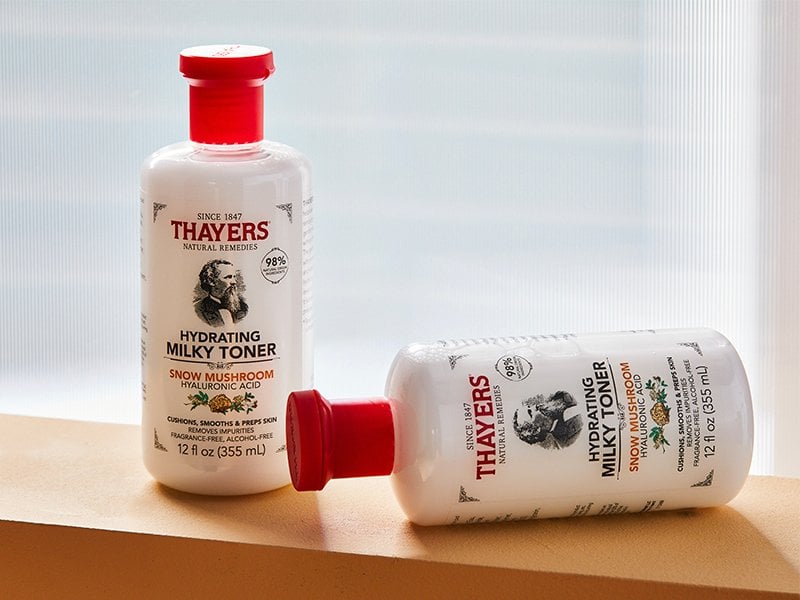What Is Facial Flooding?
April 26, 2024
Just as the tides of an ocean ebb and flow, so too do skincare trends—especially on social media. But if you’ve come across facial flooding in your feed (a.k.a. moisture sandwiching or the skin flooding method), and assumed it’s another passing craze, think again. In fact, unlike skin cycling or the slugging “sandwich,” facial flooding is a technique that’s long been a staple in many skincare routines. You may even already be doing it, without realizing it has such a flashy name.
Although the term “skin flooding” can sound intense, it’s actually a pretty gentle way to nourish your skin. It’s all about layering moisturizing products for maximum hydration. And after years of trendy routines with harsh active ingredients taking center stage, facial flooding might just be the kind of pampering your skin needs—no matter what type it is. Keep reading to learn more about the skin flooding method, the surprising results deep hydration can provide, and how to go about giving your skin the moisture it craves.
How the Skin Flooding Method Works
At the most basic level, proper hydration is important for healthy-looking skin, even if your skin tends to be on the oily side or acne-prone. That’s because your skin is protected by a natural moisture barrier, which helps retain water while keeping irritants out. This barrier is composed largely of ceramides, lipids, and fatty acids, and keeping it hydrated helps to keep it healthy.
The progressive application of products in the skin flooding method can help to lock in all the skin-loving moisture from your toners, serums, and moisturizers. While keeping your skin well-quenched may seem like a simple (even basic) concept, this process of moisture sandwiching can help improve both how your skin feels and how it looks.
The Benefits of Moisture Sandwiching
You may be surprised to learn exactly how much a big ol’ moisture sandwich can do for your skin—a boost in hydration can translate into significant results. Flooding benefits can be felt nearly right away, with skin feeling smoother and softer. And well-moisturized skin can look plumper, younger, and more healthy.
How Often Should You Skin Flood?
All skin needs hydration. But there’s no hard-and-fast rule that dictates how often you should feed your skin a “moisture sandwich.” Take how your skin looks (and feels) as a guideline. For example, if you have a dry or sensitive skin type, you may benefit from skin flooding every day. If you’re on the oilier side, once a week may be enough to give your skin an extra boost of hydration (add it to your self-care Sunday to-do list). Of course, always follow the directions for the correct frequency of use on each skincare product you apply, and consult your dermatologist—they should be able to help you work out a routine that works for your skin.
Products Used in Facial Flooding
There is an abundance of skincare products formulated for hydration out there, which means the potential moisture sandwich combos are endless. However, as is the case with the start of any skincare routine, you should always begin with a cleanser to make sure that any product that follows can be absorbed properly to get its job done as effectively as possible.
Then, follow with hydrating products of your choice, from sprays, toners, and serums to moisturizers, creams, or balms. Just remember that the order in which you apply your skincare products matters. Most routines should be applied in order from the thinnest to thickest consistency. Finally, seal all that moisture in with your heaviest hydrator. (Plus sunscreen, if you’re applying everything as part of your daytime routine.)
Your Step-by-Step Guide to Facial Flooding
If you want to flood your skin with some love, try this simple sandwiching routine:
Step 1. Cleanse
First, remove dirt, makeup, and other debris with CeraVe Hydrating Facial Cleanser. This gentle face wash is formulated with hyaluronic acid and three essential ceramides to help restore your skin’s natural barrier and lock in moisture. Wet your skin with lukewarm water and gently massage it into your skin in circular motions. You’ll be left with skin that’s refreshed—not dry or tight-feeling.
Step 2. Layer on a hydrating toner

Start your flood of post-cleansing hydration with Thayers Milky Hydrating Face Toner with Snow Mushroom and Hyaluronic Acid. The pH-balanced formula sinks into the skin, leaving it feeling smooth, comfortable, and hydrated for up to 48 hours. We suggest applying it with a clean cotton round—just sweep it onto your face and allow the formula to absorb before proceeding with your routine.
Step 3. Apply a hydration booster
Next, smooth on Vichy Minéral 89 hyaluronic acid booster. This daily hydrating and plumping booster with pure hyaluronic acid and mineral-rich volcanic water helps strengthen and repair your skin barrier while moisturizing and plumping your skin. It’s lightweight and fast-absorbing, plus it can make your skin more resistant to visible signs of aging caused by UV rays, pollution, and stress.
Step 4. Moisturize
Up your hydration ante with CeraVe Moisturizing Cream, a rich, non-greasy, fast-absorbing moisturizer that you can use on both your face and body. (May as well spread the moisturizing love, right?) Formulated with three essential ceramides, hyaluronic acid, petrolatum, and MVE Delivery Technology, this skin barrier-restoring cream continually releases moisturizing ingredients for long-lasting hydration.
Step 5. Lock in all that hydration
Seal the deal with Kiehl’s Ultra Facial Skin Barrier Repair Balm with Squalane. This invisible balm is formulated specifically to deeply hydrate your skin. It provides instant hydration and all-day moisturizing support while strengthening natural skin barrier. Use it up to four times daily on your face and body as needed, whether you're at home or on the go.
Is Skin Flooding Bad?
While all skin types can enjoy flooding benefits, it’s important to consider your skin’s unique needs.
It’s also best to use high-quality, gentle products, and to not go overboard with your layering. Too many products can leave a greasy or gunky residue and result in the formulas pilling. And, as always, you’ll want to follow the specific directions on each product you use.
Before starting any routine, consult your dermatologist. They’ll be able to guide you on the optimal approach to reap all of your well-hydrated skin rewards.
Next Up: How to Get Healthier Skin in 2024



























